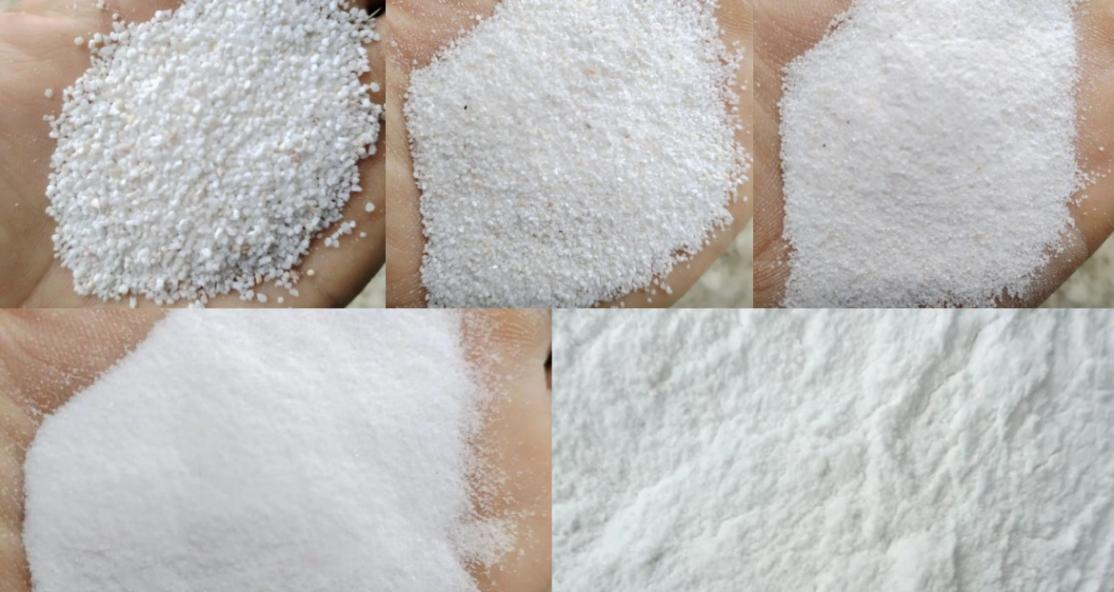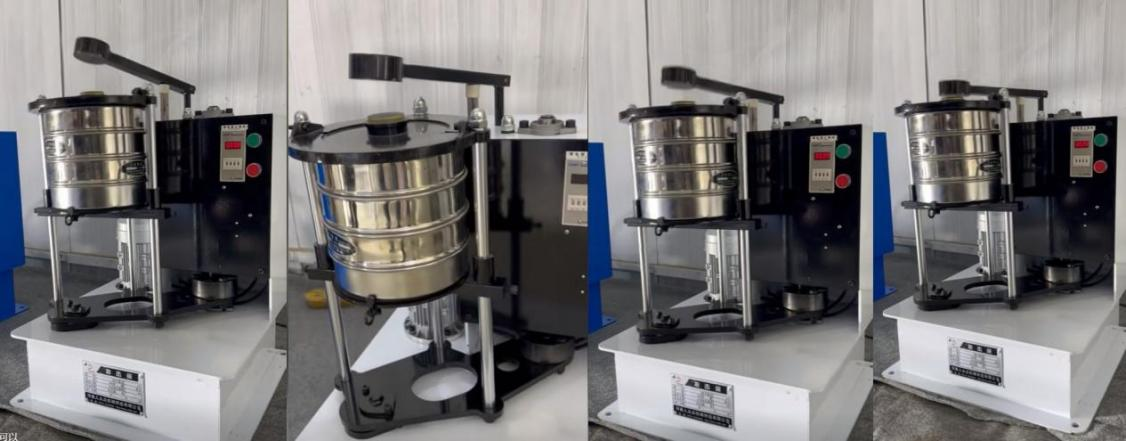Thursday July-03 2025 17:17:17
The reason why quartz sand ultrasonic slap sieve is used when screening quartz sand is that quartz sand particles are hard, small in size and unevenly distributed, and there are often problems of screen blockage and incomplete screening. The ultrasonic slap sieve combines the mechanical slapping of the traditional slap sieve with high-frequency ultrasonic vibration technology. The ultrasonic wave forms high-frequency and low-amplitude vibrations on the sieve through ultrasonic waves, effectively reducing the adhesion and agglomeration between particles and improving the screening efficiency of fine particles.

|
Comparison project |
quartz sand ultrasonic slap sieve |
quartz sand top impact screen |
|
picture |
|
|
|
Working principle |
slap vibration + ultrasonic high-frequency vibration, the slap head periodically hits the screen frame, and the ultrasonic wave acts on the screen to prevent blockage |
top impact hammer periodically hits the screen surface to promote material jumping screening, relying on mechanical top impact vibration screening |
|
Screen blockage |
Ultrasonic vibration effectively prevents fine powder from blocking the screen, and the screen is highly unobstructed |
Depending on the top impact hammer to hit, the problem of fine powder blocking the screen is more obvious, and the screen needs to be cleaned regularly |
|
Applicable screening mesh |
High mesh screening (up to 300-500 Mesh), suitable for fine powders |
low to medium mesh screening (generally 20-200 mesh), not suitable for ultra-fine powder screening |
|
Screening accuracy |
high accuracy, suitable for narrow particle size distribution and strict requirements on particle size |
general accuracy, suitable for coarse and medium particle size screening |
|
Applicable material characteristics |
suitable for quartz sand and micro powder that are easy to agglomerate and fine powder is easy to block the net |
suitable for quartz sand and similar materials with large particles and not easy to agglomerate |
The high-frequency vibration waves generated by the ultrasonic system will be transmitted to the screen, making the quartz sand particles on the screen in an extremely fine and high-speed shaking state. This shaking is enough to disintegrate the cohesive forces between particles, such as surface tension, friction and electrostatic adsorption. When these binding forces are weakened, the quartz sand particles that are easy to clump or adhere to the screen holes can easily "suspend" and pass through the screen holes freely, thus completely solving the problem of screen blockage.
At the same time, the slapping and vibration functions of the screening machine itself will periodically exert vertical impact force on the materials on the screen. This mechanical action can cause the quartz sand particles to rearrange, effectively solve the problem of quartz sand ultrasonic slapping screen powder jamming, further clean the screen surface, and improve screening efficiency and permeability.
The up and down slapping motion of the quartz sand ultrasonic slapping screen combined with the high-frequency oscillation of the ultrasonic wave makes the quartz sand particles produce more complex motion trajectories on the screen surface (such as throwing, falling, sliding), ensuring that particles of different particle sizes can pass through the corresponding sieve holes more accurately, especially suitable for the classification of 50~500 mesh (0.03~0.3mm) fine-grained quartz sand, and the particle size error can be controlled within ±2%. Ultrasonic vibration also reduces the direct impact and friction of quartz sand on the screen, and the slapping motion also reduces the accumulation pressure of particles on the screen. Compared with traditional vibrating screens, the screen wear rate can be reduced by 40%~60%, and the replacement cycle is extended by 2~3 times.
Ultrasonic high-frequency vibration can break the cohesion, friction and electrostatic adsorption between quartz sand particles, prevent fine particles from clumping together, make the material easier to disperse on the screen surface, and improve the screening rate. In traditional screening, quartz sand is easy to block the screen holes due to particle accumulation or electrostatic adsorption, and frequent shutdowns are required for cleaning; ultrasonic vibration can "clean" the screen in real time, greatly reducing the blockage phenomenon, and the equipment can operate continuously, with an efficiency increase of about 30%~50%.

Quartz sand is widely used in glass manufacturing, casting, ceramics, building materials and other industries due to its high hardness, uniform particles and high fine powder content. In scientific research institutes and quality inspection laboratories, ultrasonic slap sieves are used for detailed particle size analysis of quartz sand samples. Ultrasonic waves prevent fine powder from clogging the screen, making the screening results more accurate, which is helpful for product formula adjustment and quality control.

Glass manufacturing has strict requirements on the particle size of quartz sand. Fine dust and agglomeration will affect the furnace load and glass transparency. The ultrasonic slap sieve can effectively screen out quartz sand with suitable particle size, reduce the fine powder content, and improve the melting efficiency and glass quality.
Glass manufacturing companies need to control the precise particle size of quartz sand. The ultrasonic slap sieve is used to screen particles below 200 meshes, which solves the problem of serious blockage and incomplete screening of traditional slap sieves at high mesh numbers, ensures the uniformity of raw material particles, and improves the glass melting efficiency and quality stability.
The quartz sand ultrasonic slap sieve combines slap vibration and ultrasonic technology to overcome the problem of easy blockage and low screening efficiency of traditional slap sieves in fine powder screening. It is widely used in the field of quartz sand processing that requires high-precision and high-efficiency screening, especially suitable for laboratory testing and industrial production where strict requirements for fine powder control are required.
Telescopic belt conveyor
Telescopic belt conveyors can provide automated loading and unloading services for any type of distribution center and cargo transfer center,...
Grain moving machine augers
Grain moving machine augers are mechanical devices used in agriculture to efficiently move grain (corn, wheat, soybeans, or oats) from one...
Sewage treatment material screw conveyor
Sewage treatment material screw conveyor is a kind of equipment specially used for conveying solid or semi-solid materials (such as sludge, screen...
Z-type bucket elevator for bentonite transportation
The Z-type bucket elevator for bentonite transportation is specially designed and manufactured for the characteristics of bentonite. It is an efficient...
Farmyard manure screw conveyor
A farmyard manure screw conveyor is a device specially used for cleaning and conveying animal manure in farms. It is mainly used to convey animal manure, manure residue...
Powder test sieve
Powder test sieve is an experimental device used to analyze and detect the particle size distribution of powdered materials. It is widely us...
Jul 03, 2025
Quartz sand ultrasonic slap sieve
Quartz sand ultrasonic slap sieve is a particle size analysis device that combines ultrasonic technol...
Jul 03, 2025
Powder test sieve is a device used to analyze the particle size distribution of powdered materials. I...
Jul 02, 2025
Water Test Sieve is a method of particle size analysis using water flow as a medium. It is mainly use...
Jul 01, 2025
Application sand Specifications of Agricultural Soil Test Sieves
The agricultural soil test sieve is a screening device for accurately grading soil particles, which i...
![]()
Then we look forward to hearing from you
Contact Us
Industrials
Yanjin county forest park gate to the west 1000 meters north road sitemap
